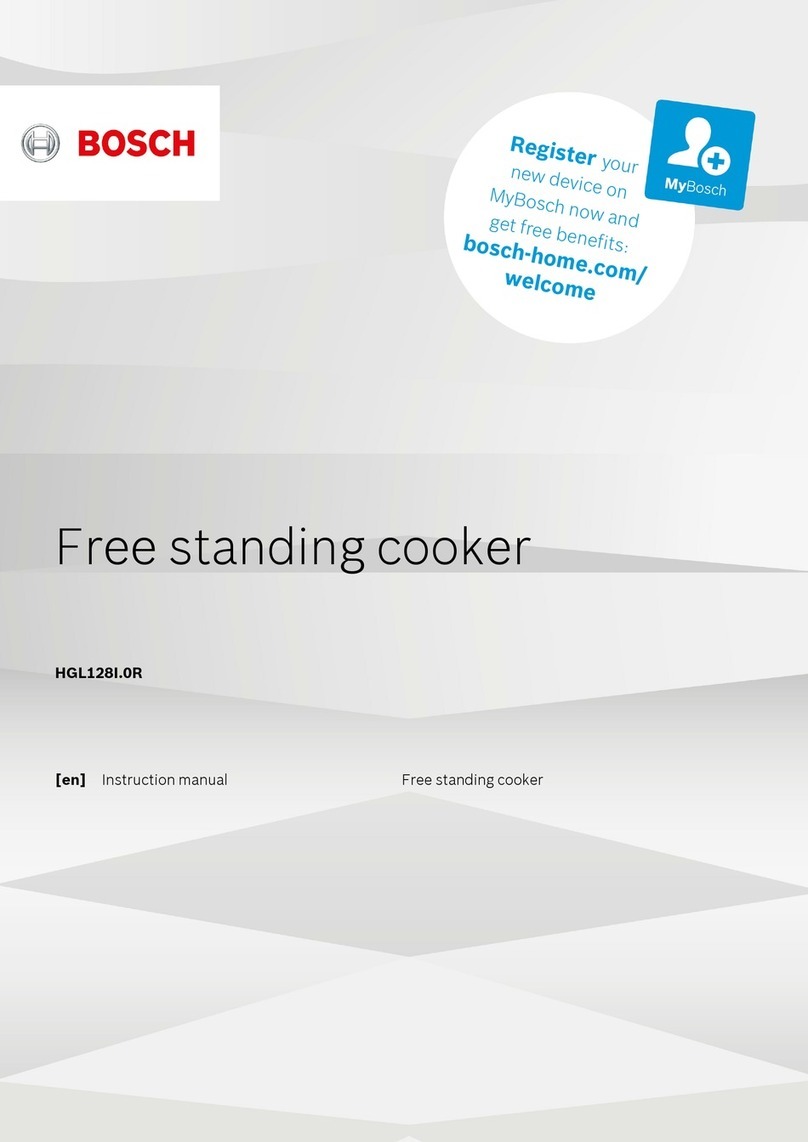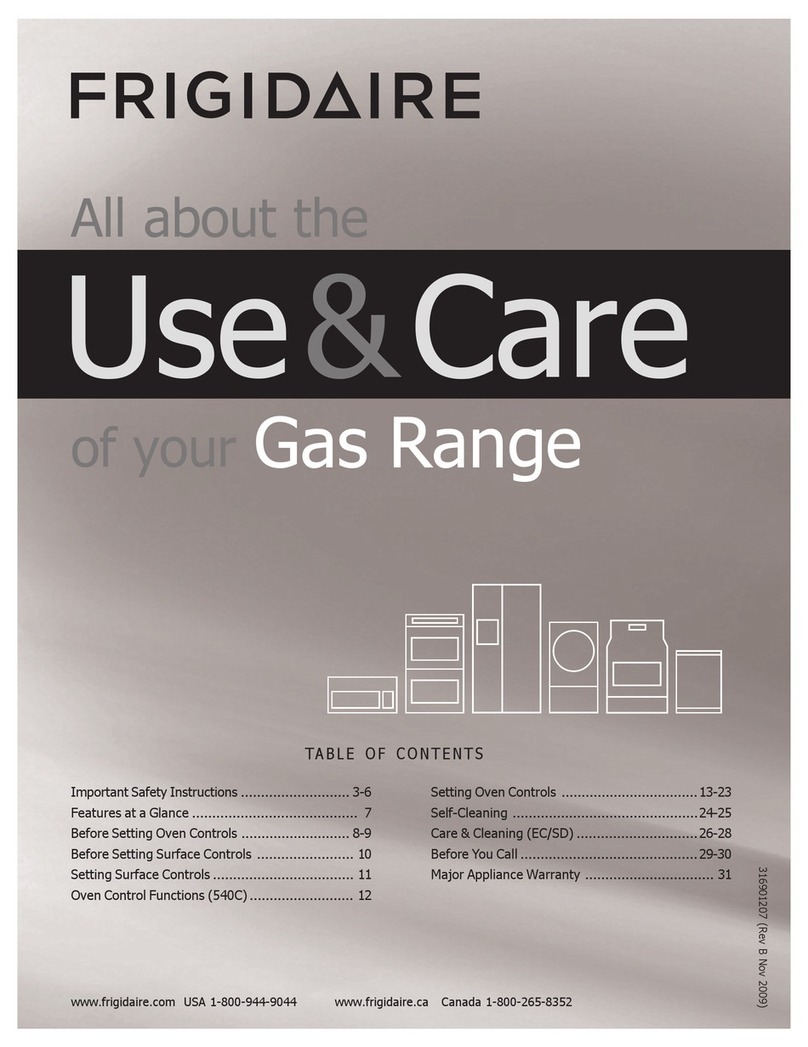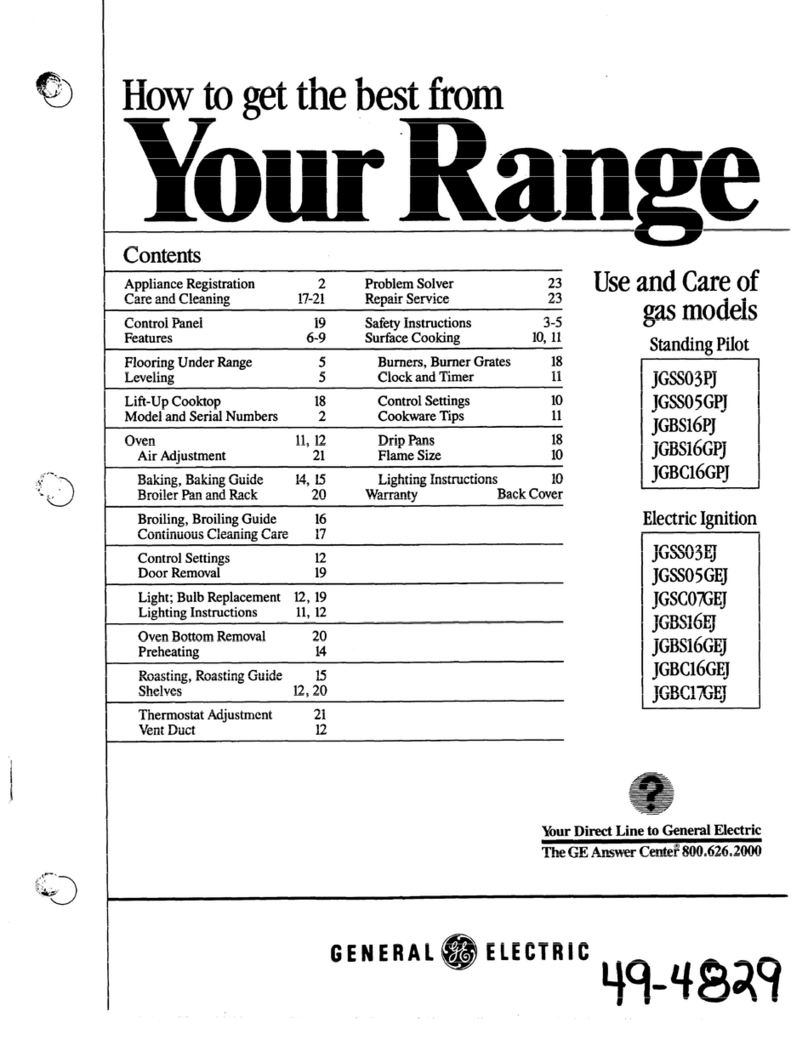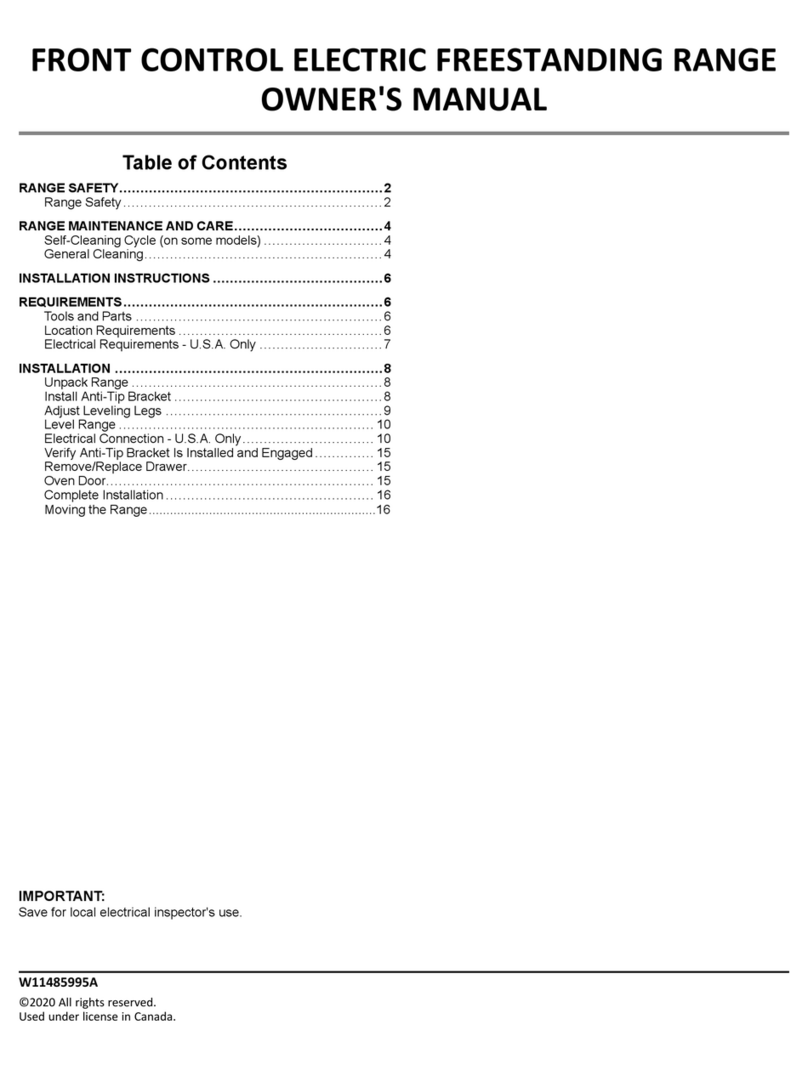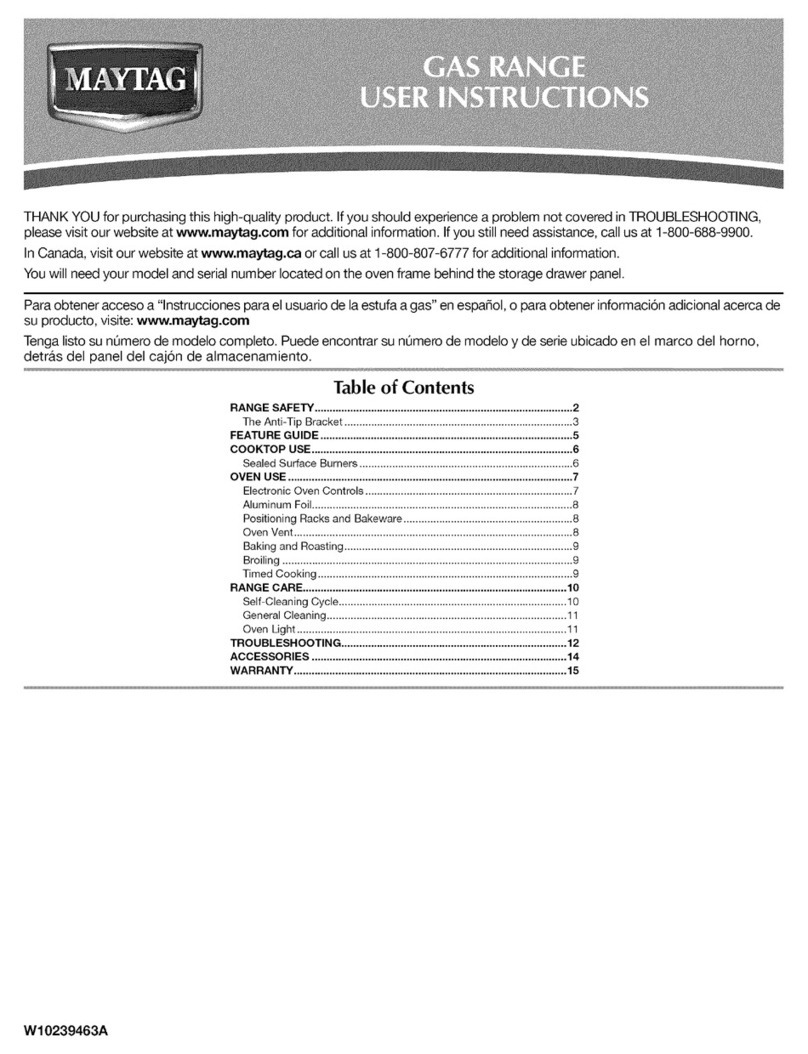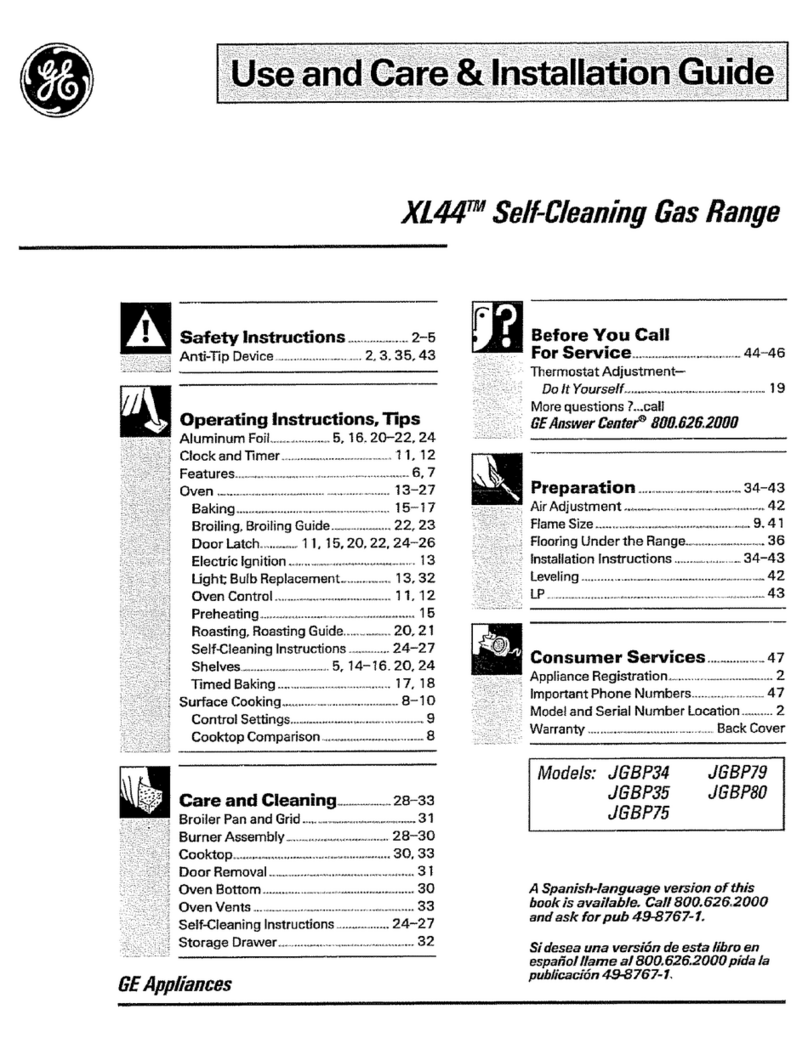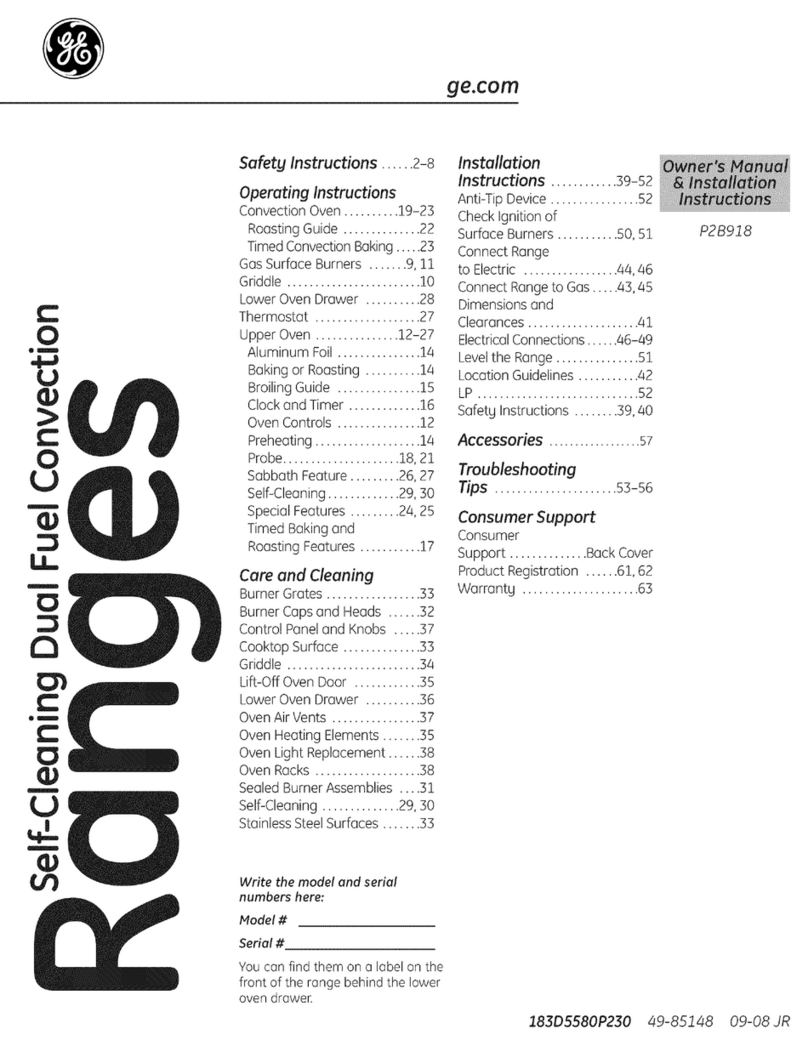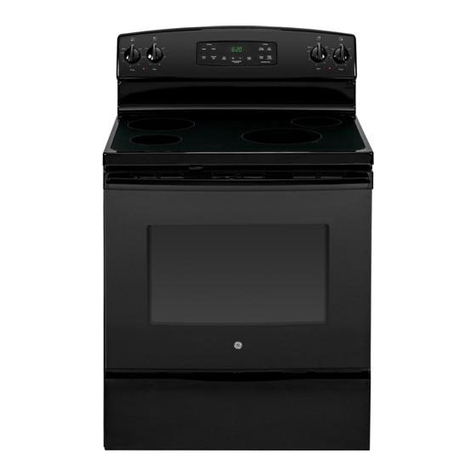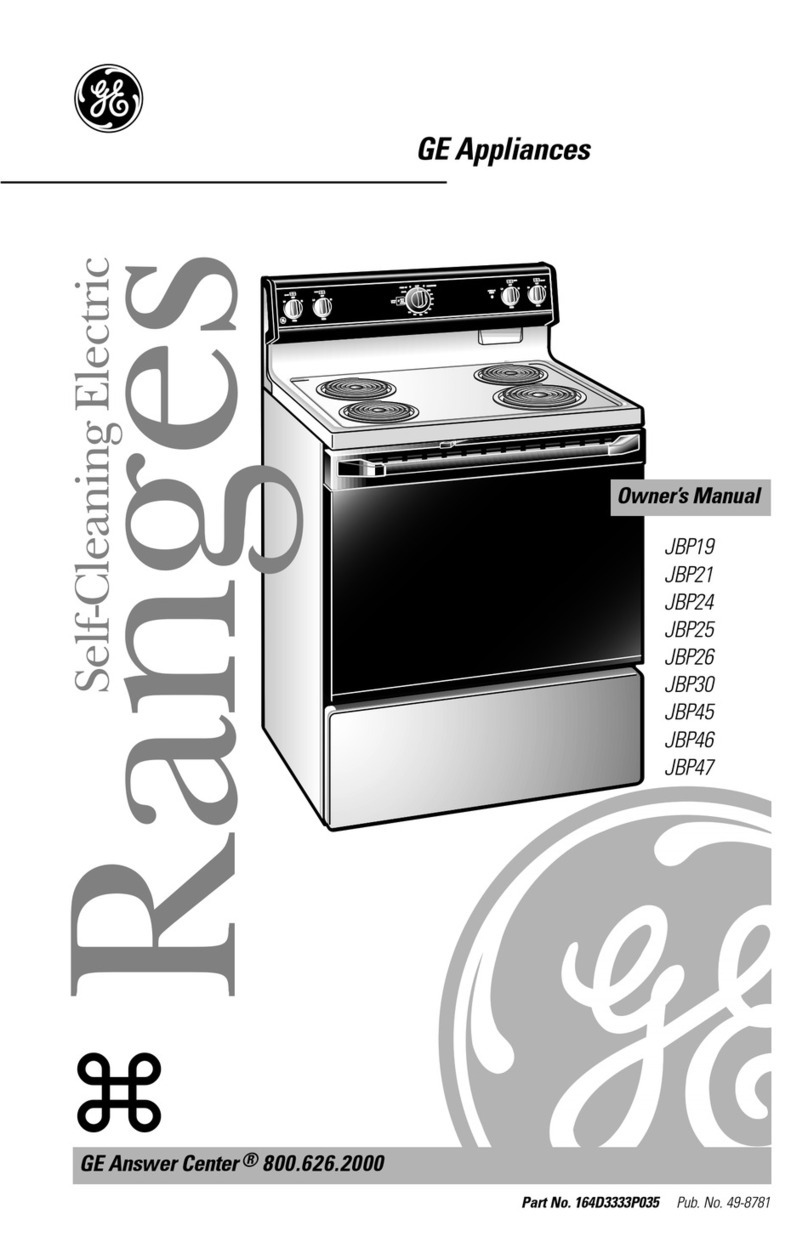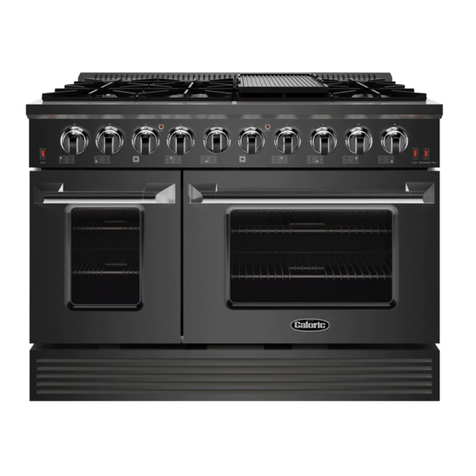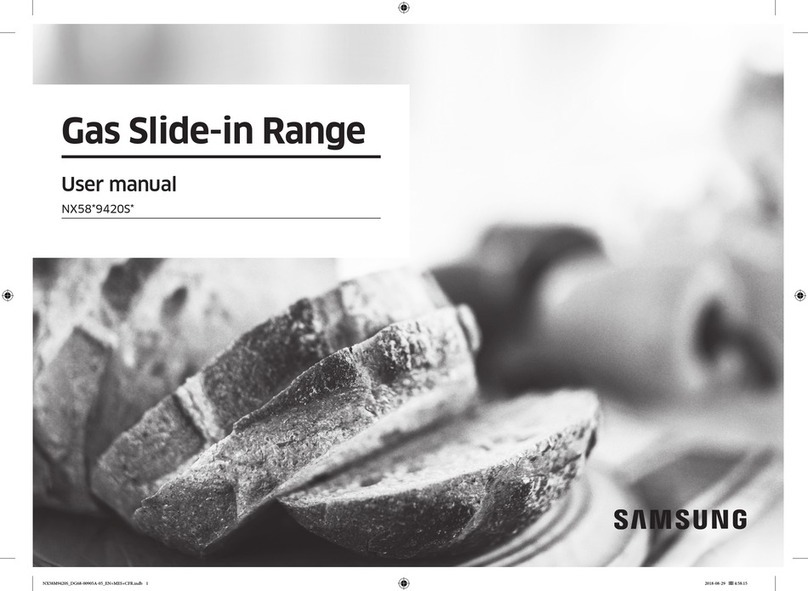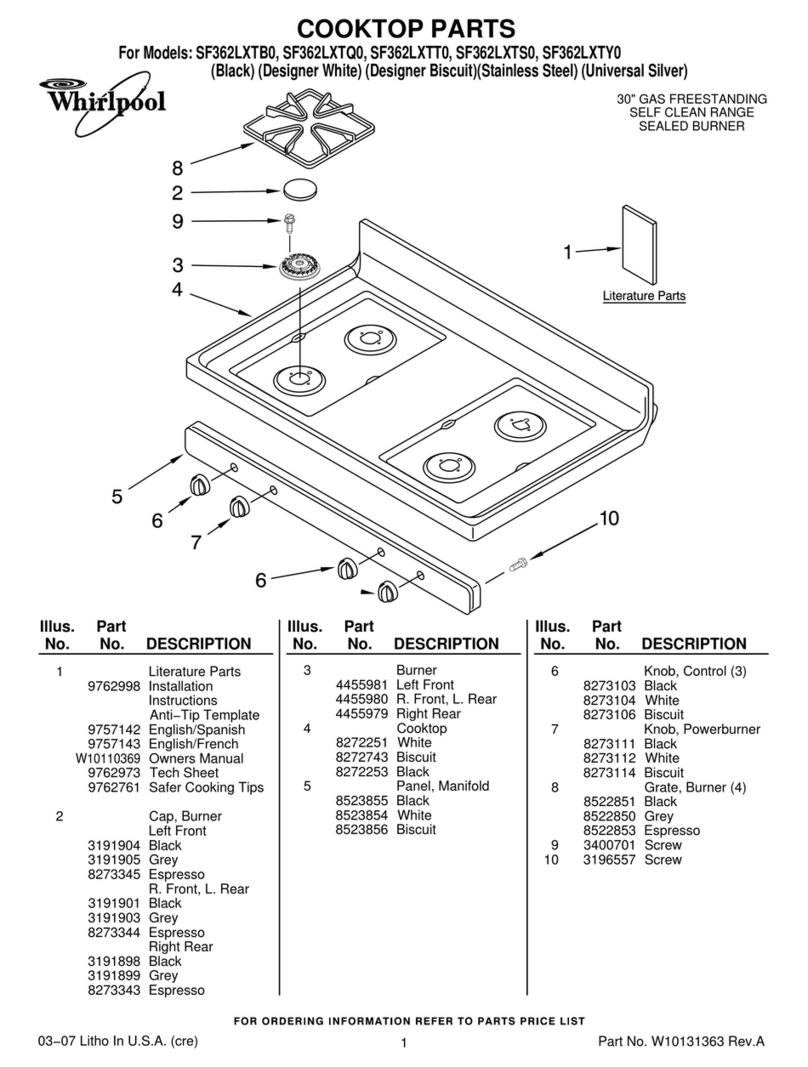Bosch HKS79R250A User manual

en Safety
2
Table of contents
1 Safety ....................................................................2
2 Preventing material damage ...............................5
3 Environmental protection and saving en-
ergy .......................................................................6
4 Installation and connection.................................7
5 Familiarising yourself with your appliance ........9
6 Accessories........................................................12
7 Before using for the first time ...........................13
8 Operating the hotplate.......................................14
9 Basic operation ..................................................14
10 Rapid heating .....................................................15
11 Time-setting options..........................................15
12 Programmes .......................................................17
13 Childproof lock...................................................20
14 Sabbath mode ....................................................20
15 Basic settings.....................................................20
16 Cleaning and servicing......................................21
17 Pyrolysis.............................................................23
18 Cleaning aid........................................................24
19 Rails ....................................................................25
20 Appliance door...................................................26
21 Troubleshooting.................................................29
22 Transportation and disposal .............................30
23 Customer Service...............................................31
24 How it works.......................................................31
1 Safety
Observe the following safety instructions.
1.1 Intended use
Read the information on intended use to en-
sure that you use the appliance correctly and
safely.
The figures in these instructions are intended
for information purposes.
Only a licensed professional may connect ap-
pliances without plugs. Damage caused by in-
correct connection is not covered under the
warranty.
Only use the appliance as follows:
¡To prepare meals and drinks.
¡Under supervision. Never leave the appli-
ance unattended when cooking for short
periods.
¡In private households and in enclosed
spaces in a domestic environment.
¡Up to an altitude of max. 4000m above
sea level.
Do not use the appliance:
¡On boats or in vehicles.
¡as a room heater.
¡with an external timer or a remote control.
You cannot operate the appliance with a timer
or remote control.
Always place accessories in the cooking com-
partment the right way round.
1.2 Restriction on user group
This appliance may be used by children aged
8 or over and by people who have reduced
physical, sensory or mental abilities or inad-
equate experience and/or knowledge,
provided that they are supervised or have
been instructed on how to use the appliance
safely and have understood the resulting
dangers.
Do not let children play with the appliance.
Children must not perform cleaning or user
maintenance unless they are at least 15 years
old and are being supervised.
Keep children under the age of 8 years away
from the appliance and power cable.
1.3 Safe use
WARNING‒Risk of fire!
The appliance will become hot.
▶Do not keep combustible objects or aero-
sol cans in drawers directly underneath the
hob.
▶Never store or use combustible materials
(e.g. spray cans or cleaning agents) under
the appliance or in its immediate vicinity.
The cooking surface becomes very hot.
▶Never place flammable objects on the
cooking surface or in its immediate vicinity.
▶Never place objects on the cooking sur-
face.
Leaving fat or oil cooking on an unattended
hob can be dangerous and may lead to fires.
▶Never leave hot oil or fat unattended.
▶Never attempt to extinguish a fire using wa-
ter; instead, switch off the appliance and
then cover with a lid or a fire blanket.

Safety en
3
Hob covers can cause accidents, for example
due to overheating, catching fire or materials
shattering.
▶Do not use hob covers.
Opening the appliance door creates a
draught. Greaseproof paper may come into
contact with the heating element and catch
fire.
▶Never place greaseproof paper loosely
over accessories when preheating the ap-
pliance and while cooking.
▶Always cut greaseproof paper to size and
use a plate or baking tin to hold it down.
Combustible objects that are left in the cook-
ing compartment may catch fire.
▶Never store combustible objects in the
cooking compartment.
▶If smoke is emitted, the appliance must be
switched off or the plug must be pulled out
and the door must be held closed in order
to stifle any flames.
Food may catch fire.
▶The cooking process must be monitored. A
short process must be monitored continu-
ously.
WARNING‒Risk of burns!
The appliance and its parts that can be
touched become hot during use, particularly
the hob surround, if fitted.
▶Caution should be exercised here in order
to avoid touching heating elements.
▶Young children under 8 years of age must
be kept away from the appliance.
Hob protective grilles may cause accidents.
▶Never use hob protective grilles.
Accessories and cookware get very hot.
▶Always use oven gloves to remove ac-
cessories or cookware from the cooking
compartment.
The appliance becomes hot during operation.
▶Allow the appliance to cool down before
cleaning.
When the cooking compartment is hot, any al-
coholic vapours inside may catch fire.
▶Only use small quantities of drinks with a
high alcohol content in food.
▶Open the appliance door carefully.
The appliance and its parts that can be
touched become hot during use.
▶Caution should be exercised here in order
to avoid touching heating elements.
▶Young children under 8 years of age must
be kept away from the appliance.
WARNING‒Risk of electric shock!
Incorrect repairs are dangerous.
▶Repairs to the appliance should only be
carried out by trained specialist staff.
▶Only use genuine spare parts when repair-
ing the appliance.
▶If the power cord of this appliance is dam-
aged, it must be replaced by the manufac-
turer, the manufacturer's Customer Service
or a similarly qualified person in order to
prevent any risk.
If the appliance or the power cord is dam-
aged, this is dangerous.
▶Never operate a damaged appliance.
▶Never operate an appliance with a cracked
or fractured surface.
▶Call customer services. →Page31
An ingress of moisture can cause an electric
shock.
▶Do not use steam- or high-pressure clean-
ers to clean the appliance.
The insulation on cables of electrical appli-
ances may melt if it touches hot parts of the
appliance.
▶Never bring electrical appliance cables into
contact with hot parts of the appliance.
If the insulation of the power cord is dam-
aged, this is dangerous.
▶Never let the power cord come into contact
with hot appliance parts or heat sources.
▶Never let the power cord come into contact
with sharp points or edges.
▶Never kink, crush or modify the power
cord.
WARNING‒Risk of injury!
The hinges on the appliance door move when
the door is opened and closed, which could
trap your fingers.
▶Keep your hands away from the hinges.
Scratched glass in the appliance door may
develop into a crack.
▶Do not use any harsh or abrasive cleaners
or sharp metal scrapers to clean the glass
on the oven door, as they may scratch the
surface.
If you leave the appliance door open, people
may bump into it, resulting in injury.
▶Always keep the appliance door closed
during and after operation.

en Safety
4
Saucepans may suddenly jump due to liquid
between the saucepan base and the hotplate.
▶Always keep hotplates and saucepan
bases dry.
WARNING‒Risk of scalding!
The accessible parts of the appliance become
hot during operation.
▶Never touch these hot parts.
▶Keep children at a safe distance.
Hot steam may escape when you open the
appliance door. Steam may not be visible, de-
pending on the temperature.
▶Open the appliance door carefully.
▶Keep children at a safe distance.
If there is water in the cooking compartment
when it is hot, this may create hot steam.
▶Never pour water into the cooking compart-
ment when the cooking compartment is
hot.
WARNING‒Risk of suffocation!
Children may put packaging material over
their heads or wrap themselves up in it and
suffocate.
▶Keep packaging material away from chil-
dren.
▶Do not let children play with packaging ma-
terial.
Children may breathe in or swallow small
parts, causing them to suffocate.
▶Keep small parts away from children.
▶Do not let children play with small parts.
WARNING‒Risk of tipping!
If the appliance is placed on a base and is
not secured, it may slide off the base.
▶Connect the appliance securely to the
base.
▶Warning: To prevent the appliance from tip-
ping over, attach a compensation device.
▶Observe the instructions for the installation.
1.4 Plinth drawer
WARNING‒Risk of fire!
The surfaces of the plinth drawer may be-
come very hot.
▶Only store oven accessories in the drawer.
▶Do not keep any flammable or combustible
objects in the plinth drawer.
1.5 Halogen bulb
WARNING‒Risk of burns!
The bulbs in the cooking compartment get
very hot. There is still a risk of burning for
some time after they have been switched off.
▶Do not touch the glass cover.
▶Avoid contact with your skin when cleaning.
WARNING‒Risk of electric shock!
When changing the bulb, the bulb socket con-
tacts are live.
▶Before replacing the bulb, ensure that the
appliance is switched off in order to pre-
vent a potential electric shock.
▶Also unplug the appliance from the mains
or switch off the circuit breaker in the fuse
box.
1.6 Cleaning function
WARNING‒Risk of fire!
The outside of the appliance gets very hot
when the cleaning function is in progress.
▶Never hang combustible objects, e.g. tea
towels, on the door handle.
▶Leave the front of the appliance clear.
▶Keep children at a safe distance.
If the door seal is damaged, a large amount
of heat is generated around the door.
▶Do not scrub or remove the seal.
▶Never operate the appliance if the seal is
damaged or missing.
WARNING‒Risk of serious harm to
health!
The appliance gets very hot when the clean-
ing function is in progress. The non-stick coat-
ing on baking trays and tins is destroyed and
noxious gases are released.
▶Never clean non-stick baking trays or bak-
ing tins using the cleaning function.
▶Never clean accessories at the same time.
WARNING‒Risk of harm to health!
The cleaning function heats up the cooking
compartment to a very high temperature so

Preventing material damage en
5
that food left over from roasting, grilling and
baking will burn off. This process releases va-
pours, which can irritate mucous membranes.
▶Keep the kitchen well ventilated while the
cleaning function is running.
▶Do not remain in the room for long periods.
▶Keep children and pets away.
WARNING‒Risk of burns!
The cooking compartment gets very hot when
the cleaning function is in progress.
▶Never open the appliance door.
▶Allow the appliance to cool down.
▶Keep children at a safe distance.
The outside of the appliance gets very hot
when the cleaning function is in progress.
▶Never touch the appliance door.
▶Allow the appliance to cool down.
▶Keep children at a safe distance.
2 Preventing material damage
2.1 Oven area
Follow the corresponding instructions when using the
oven.
ATTENTION!
Objects on the cooking compartment floor at over
50°C will cause heat to build up. The baking and
roasting times will no longer be correct and the enamel
will be damaged.
▶Do not place any accessories, greaseproof paper or
foil of any kind on the cooking compartment floor.
▶Only place cookware on the cooking compartment
floor if a temperature above 50°C has been set.
If aluminium foil comes into contact with the door pane,
it could cause permanent discolouration.
▶Do not allow aluminium foil in the cooking compart-
ment to come into contact with the door pane.
When the cooking compartment is hot, any water in-
side it will create steam. The change in temperature
may cause damage.
▶Never pour water into the cooking compartment
when it is still hot.
▶Never place cookware containing water on the
cooking compartment floor.
The prolonged presence of moisture in the cooking
compartment leads to corrosion.
▶Allow the cooking compartment to dry after use.
▶Do not keep moist food in the cooking compartment
for a long time with the door closed.
▶Do not store food in the cooking compartment.
Leaving the appliance to cool down with the door open
will damage the front of neighbouring kitchen units over
time.
▶Always allow the cooking compartment to cool
down with the door closed after cooking at high
temperatures.
▶Take care not to trap anything in the appliance
door.
▶Only leave the cooking compartment to dry with the
door open if a lot of moisture was produced during
operation.
Fruit juice dripping from the baking tray leaves stains
that cannot be removed.
▶When baking very juicy fruit flans, do not pack too
much on the baking tray.
▶If possible, use the deeper universal pan.
Using oven cleaner in a hot cooking compartment
damages the enamel.
▶Never use oven cleaner in the cooking compartment
when it is still warm.
▶Remove all food remnants from the cooking com-
partment and the appliance door before you next
heat up the appliance.
If the seal is very dirty, the appliance door will no
longer close properly during operation. This may dam-
age the front of adjacent kitchen units.
▶Keep the seal clean at all times.
▶Never operate the appliance if the seal is damaged
or missing.
Sitting or placing objects on the appliance door may
damage it.
▶Do not place or hang objects on the appliance door.
▶Do not place cookware or accessories on the appli-
ance door.
With certain models, accessories may scratch the door
pane when closing the appliance door.
▶Always push accessories fully into the cooking com-
partment.
If you carry or move the appliance by the handle on the
cover or move, the handle may break off and cause
damage to the hinges. The handle of the cover is not
designed for the weight of the appliance.
▶Do not carry or move the appliance by the handle
on the cover.
When grilling, due to high temperatures, the baking tray
or universal pan may become deformed and damage
the enamel coating when they are removed.
▶When grilling, do not insert the baking tray or univer-
sal pan higher than level 3.
▶Above shelf position 3, only grill directly on the wire
insert.

en Environmental protection and saving energy
6
2.2 Hob
Follow the corresponding instructions when using the appliance.
Avoiding material damage
This is where you can find the most common causes of damage and tips on how to avoid them.
Damage Cause Measure
Stains Unsupervised cooking process. Monitor the cooking process.
Stains, blisters Spilled food, especially food with a high
sugar content.
Remove immediately with a glass scraper.
Stains, blisters or
fractures in the glass
Defective cookware, cookware with melted
enamel or cookware with copper or alu-
minium base.
Use suitable cookware that is in a good con-
dition.
Stains, discolouration Unsuitable cleaning methods. Only use cleaning agents that are suitable for
glass ceramic, and only clean the hob when
it is cold.
Blisters or fractures in
the glass
Knocks or falling cookware, cooking ac-
cessories or other hard or pointed objects.
When cooking, do not hit the glass or let ob-
jects fall onto the hob.
Scratches, discolour-
ation
Rough cookware bases or moving the cook-
ware on the hob.
Check the cookware. Lift the cookware when
moving it.
Scratches Salt, sugar or sand. Do not use the hob as a work surface or
storage space.
Damage to the appli-
ance
Cooking with frozen cookware. Never use frozen cookware.
Damage to the cook-
ware or the appliance
Cooking without contents. Never place or heat empty cookware on a
hot cooking zone.
Glass damage Melted material on the hot cooking zone or
hot pot lid on the glass.
Do not place greaseproof paper or alu-
minium foil nor plastic containers or pot lids
on the hob.
Overheating Hot cookware on the control panel or on the
frame.
Never place hot cookware on these areas.
2.3 Drawer area
Follow the corresponding instructions when using the
drawer.
ATTENTION!
Do not place hot objects in the plinth drawer. The plinth
drawer may be damaged.
▶Do not place hot objects in the plinth drawer.
Do not place oven accessories that exceed the height
of the drawer into the plinth drawer. Otherwise, this
may damage the appliance.
▶Do not place oven accessories that exceed the
height of the drawer into the plinth drawer.
3 Environmental protection and saving energy
3.1 Disposing of packaging
The packaging materials are environmentally compat-
ible and can be recycled.
▶Sort the individual components by type and dispose
of them separately.
3.2 Saving energy
If you follow these instructions, your appliance will use
less power.
Only preheat the appliance if the recipe or the recom-
mended settings tell you to do so.
¡Not preheating the appliance can reduce the en-
ergy used by up to 20%.
Use dark-coloured, black-coated or enamelled baking
tins.
¡These types of baking tin absorb the heat particu-
larly well.
Open the appliance door as little as possible during
operation.
¡This maintains the temperature in the cooking com-
partment and eliminates the need for the appliance
to reheat.
When baking multiple dishes, do so in succession or
in parallel.
¡The cooking compartment is heated after baking
the first dish. This reduces the baking time for the
second cake.

Installation and connection en
7
If the cooking time is relatively long, you can switch
the appliance off 10minutes before the cooking time
ends.
¡There will be enough residual heat to finish cooking
the dish.
Remove any accessories that are not being used from
the cooking compartment.
¡Accessories that are not being used do not need to
be heated.
Allow frozen food to defrost before cooking.
¡This saves the energy that would otherwise be re-
quired to defrost it.
Note:
The appliance requires:
¡A maximum of 1W when the appliance is in opera-
tion with the display switched on
¡A maximum of 0.5W when the appliance is in oper-
ation with the display switched off
Saving energy
If you follow these instructions, your appliance will use
less power.
Select the cooking zone to match the size of your
pan. Centre the cookware on the hob.
Use cookware whose base diameter is the same dia-
meter as the hotplate.
Tip:Cookware manufacturers often give the upper
diameter of the saucepan. It is often larger than the
base diameter.
¡Unsuitable cookware or incompletely covered cook-
ing zones consume a lot of energy.
Cover saucepans with suitable lids.
¡Cooking without a lid consumes considerably more
energy.
Lift lids as infrequently as possible.
¡When you lift the lid, a lot of energy escapes.
Use a glass lid.
¡You can see into the pan through a glass lid
without having to lift it.
Use pots and pans with flat bases.
¡Uneven bases increase energy consumption.
Use cookware that is suitable for the quantity of food.
¡Large items of cookware containing little food need
more energy to heat up.
Cook with only a little water.
¡The more water that is contained in the cookware,
the more energy is required to heat it up.
Turn down to a lower power level early on.
¡If you use an ongoing power level that is too high,
you will waste energy.
¡Unused residual heat increases energy consump-
tion.
4 Installation and connection
You can find out where and how best to install your ap-
pliance here. You will also learn how to connect your
appliance to the power supply.
4.1 Electrical connection
The appliance must be connected to the mains by a li-
censed expert. You must comply with the requirements
of your electricity supplier.
¡If the power cord of this appliance is damaged, it
must be replaced by the manufacturer, the manufac-
turer's Customer Service or a similarly qualified per-
son in order to prevent any risk.
¡Any damage arising from the appliance being con-
nected incorrectly will invalidate the warranty.
Information on the electrical connection by the
installer:
¡If the plug is not accessible following installation, an
all-pole isolating unit with a contact clearance of at
least 3mm must be available on the installation
side. This is not necessary if the appliance is con-
nected via a plug that is accessible to the user.
¡Electrical safety: The cooker corresponds to safety
class I and may only be used in conjunction with a
safety earth terminal.
¡To connect the appliance, use H05VV-F cables or
other equivalent cables.
The mains voltage must correspond to the voltage
specified on the rating plate.
Connect the wires in the power cord according to the
colour coding:
Note:If the power cord is replaced Only connect it to
the appliance as shown in the connection diagram
¡Green and yellow: earth wire .
¡Blue: (null) neutral wire
¡Brown: phase (external conductor).
Important information about the electrical
connection
Note the following information and ensure that:
WARNING‒Risk of electric shock!
There is a risk of electric shock if you touch live com-
ponents.
▶Hold the mains plug with dry hands only.
▶Never pull out the mains plug from the socket while
the appliance is in operation.
▶Pull out the power cable directly at the plug and
never by pulling the power cable as this may be-
come damaged.
¡Fit the mains plug and socket together.
¡The mains plug can be accessed at all times.
¡The cross section of the cable is sufficient.
¡The mains cable is not kinked, crushed, modified or
severed.

en Installation and connection
8
¡If required, the mains cable must only be replaced
by a qualified electrician. A replacement mains
cable is available from the after-sales service.
¡Do not use any multiple plugs or multi-connectors
and extension cords.
¡The earthing system is correctly installed.
¡If using a residual current device, only use one that
bears the mark . The presence of this mark is the
only way to be sure that it fulfils all the applicable
regulations.
¡The mains cable does not come into contact with
heat sources.
4.2 Setting up the appliance
Place the appliance on a smooth surface.
Never set up the appliance behind a decorative door or
the door of a kitchen unit. There is a risk of overheat-
ing.
Setting the base height of the appliance
Set the base height in accordance with the functions of
your appliance.
Adjusting the height of the appliance with fixed
drawers
If your appliance has fixed drawers, set the base height
of your appliance as follows.
Note:
The appliance has height-adjustable feet. This allows
the appliance to be raised approx. 15 mm from the
ground.
¡The feet are located at the front and rear on the un-
derside of the appliance.
¡Raise or lower the feet by turning the feet with an Al-
len key until the appliance is in a horizontal position.
Setting the base height of the appliance with a
removable drawer
If your appliance does not have height-adjustable feet
and the drawer is removable, set the base height of
your appliance as follows.
1. Pull out the plinth drawer and lift it up and out. There
are adjustable feet at the front and rear on the in-
side of the plinth.
2. Use an Allen key to raise or lower the adjustable
feet until the cooker is level.
3. Push in the plinth drawer.
Setting the base height of the appliance with height-
adjustable feet
If your appliance has height-adjustable feet, set the
base height of your appliance as follows.
Note:
The appliance has height-adjustable feet. This allows
the appliance to be raised approx. 15 mm from the
ground.
¡Your appliance is supplied with a kit containing
height-adjustable feet.
¡Please observe the installation instructions.
Adjacent units
Any adjacent units must not be made of flammable ma-
terials. The fronts of any adjacent units must be heat-
resistant up to at least 90 °C.
Wall fixing
To prevent the appliance from tipping over, you must
fix it to the wall using the enclosed brackets. To secure
the appliance to the wall, follow the installation instruc-
tions.

Familiarising yourself with your appliance en
9
5 Familiarising yourself with your appliance
5.1 Your appliance
You can find an overview of the parts of your appliance
here.
Note:On certain models, specific details such as col-
our and shape may differ from those pictured.
1
2
3
4
5
Explanation
1
Hob
2
Control panels
3
Cooling fan1
4
Appliance door
5
Plinth drawer1
1Depending on the appliance specifications
5.2 Hob
You can find an overview of the different activations of
the hotplates here.
On certain models, specific details such as colour and
shape may differ from those pictured.
Ø 18
Ø 14,5
Ø 21/12
Ø 17/26,5
Ø = cm
Hotplate Activating and deactivating
Single-circuit
hotplate
Dual-circuit
hotplate
Turn the hotplate selector
clockwise to . Select the
power level.
Switching off: Turn the hot-
plate selector to 0 and reset.
Never turn the hotplate se-
lector to 0 via .
Roasting zone Turn the hotplate selector
clockwise to . Select the
power level.
Switching off: Turn the hot-
plate selector to 0 and reset.
Never turn the hotplate se-
lector to 0 via .
Notes
¡Dark areas in the glow pattern of the hotplate are
part of the technical design. This does not affect the
functionality of the hotplate.
¡The hotplate regulates the temperature by switching
the heat on and off. The heat may also switch on
and off when at the highest setting.
–This protects easily damaged components from
overheating.
–The appliance is protected against electrical
overload.
–You achieve better cooking results.
¡With multi-circuit hotplates, the heating of the inner
filament circuits and the heating of the activations
may switch on and off at different times.
Residual heat indicator
The hob has a residual heat indicator for each hotplate.
It shows which hotplates are still hot. Even if the hob is
switched off, the display lights up until the hotplate has
cooled down sufficiently. Do not touch the hotplate
while the residual heat indicator is lit up.

en Familiarising yourself with your appliance
10
Tip:You can keep small dishes warm or melt cooking
chocolate.
5.3 Control panels
You can use the control panel to configure all functions
of your appliance and to obtain information about the
operating status.
Controls
You can use the controls to configure all functions of
your appliance and to obtain information about the op-
erating status.
Control Explanation
Buttons and display The buttons are touch-
sensitive surfaces. To se-
lect a function, simply
press lightly on the relev-
ant field.
The display shows sym-
bols for active functions
and the time-setting op-
tions.
→"Buttons and display",
Page10
Function selector Use the function selector
to set the types of heating
and other functions.
You can turn the function
selector clockwise or anti-
clockwise from the zero
setting .
Depending on the appli-
ance, the function se-
lector can be pushed in.
Press on the function se-
lector to click it into or out
of the zero setting .
→"Types of heating and
functions", Page10
Control Explanation
Temperature selector Use the temperature se-
lector to set the temperat-
ure for the type of heating
and select settings for
other functions.
You can turn the temper-
ature selector clockwise
and anti-clockwise. It
does not have a zero set-
ting.
Depending on the appli-
ance, the temperature se-
lector can be pushed in.
Press on the temperature
selector to click it in or
out.
→"Temperature and set-
ting levels", Page11
Hotplate control You can use the four hot-
plate switches to control
the output provided by
each individual hotplate.
The symbol above each
of the switches shows
you which hotplate is set
using that switch.
→"Hotplate selector",
Page12
Buttons and display
You can use the buttons to set various functions for your appliance. The display shows the settings.
If a function is active, the corresponding symbol lights up on the display. only lights up when you change the time.
Symbol Function Use
Childproof lock Activate or deactivate the childproof lock.
Time-setting options Select the time , timer , cooking time and the end time .
To select the individual time-setting options, press several times.
The red bar above or below the respective symbol indicates the
function to which the setting in the display corresponds.
Oven light Switch the lighting in the cooking compartment on and off.
Minus
Plus
Decrease the setting values.
Increase the setting values.
Rapid heating Preheat the cooking compartment rapidly without accessories.
Types of heating and functions
To ensure that you always find the right type of heating to cook your food, we explain the differences and applica-
tions below.

Familiarising yourself with your appliance en
11
When you select a type of heating, the appliance suggests a suitable temperature or setting. You can use these val-
ues or change them within the specified range.
Symbol Type of heating and
temperature range
What it's used for and how it works
3Dhot air
30-275°C
Bake or roast on one or more levels.
The fan distributes the heat from the ring-shaped heating element in the back
wall evenly around the cooking compartment.
Hot air gentle
125-275°C
Cook selected dishes gently on one level without preheating.
The fan distributes the heat from the ring-shaped heating element in the back
wall evenly around the cooking compartment. The food is cooked in phases us-
ing residual heat.
Always keep the appliance door closed when cooking.
This type of heating is used to determine the energy consumption in air recircu-
lation mode and the energy efficiency class.
Pizza setting
30-275°C
Cook pizza or food that requires a lot of heat from below.
The bottom heating element and the ring-shaped heating element in the back
wall heat the cooking compartment.
Bottom heating
30-300°C
Final baking or cooking food in a bain marie.
The heat is emitted from below.
Keep warm
60-100°C
Keep cooked food warm.
Defrosting
30-60°C
Gently defrost frozen food.
Slow cooking
70-120°C
Slowly and gently cook seared, tender pieces of meat in uncovered cookware.
The heat is emitted evenly from above and below at a low temperature.
Full-surface grill
Grill settings:
1 = low
2 = medium
3 = high
Grill flat items such as steak, sausages, or toast. Gratinate food.
The entire area below the grill element becomes hot.
Hot air grilling
30-300°C
Roast poultry, whole fish or large pieces of meat.
The grill element and the fan switch on and off alternately. The fan circulates the
hot air around the food.
Top/bottom heating
30-300°C
Traditionally bake or roast on one level. This type of heating is especially suit-
able for cakes with moist toppings.
The heat is emitted evenly from above and below.
This type of heating is used to determine the energy consumption in the conven-
tional mode.
Additional functions
Here, you can find an overview of other functions of your appliance.
Symbol Function Use
Programmes Use programmed setting values for various types of food.
→"Programmes", Page17
Pyrolytic self-cleaning Set the cleaning function, which cleans the cooking compartment virtually inde-
pendently.
→"Pyrolysis", Page23
Temperature and setting levels
There are different settings for the types of heating and
functions.
The settings appear in the display.
The temperature can be set in 1 degree increments up
to 100°C, and in 5 degree increments thereafter.
Note:For grill setting3, the appliance lowers the set-
ting to grill setting1 after approx. 20minutes.
Heat-up indicator
The appliance indicates when it is heating up.
The line at the bottom of the display turns red from left
to right as the cooking compartment heats up.
When you preheat the appliance, the optimal time to
place your food in the cooking compartment is as soon
as the entire line has turned red.
Residual heat indicator
If you switch off the appliance, the line on the display
shows the residual heat in the cooking compartment.
The lower the temperature in the cooking compartment,
the less the line is filled.

en Accessories
12
Notes
¡The heat-up indicator only shows the temperature in-
creasing for types of heating for which a temperat-
ure is set. For grill settings, for example, the heat-up
indicator shows a full line from the beginning.
¡If the temperature in the cooking compartment is
too high when the appliance is started, appears in
the display for some types of heating. Switch off the
appliance and allow it to cool. Then restart the oper-
ation.
¡Due to thermal inertia, the temperature that is dis-
played may differ slightly from the actual temperat-
ure inside the cooking compartment.
Hotplate selector
You can use the hotplate selector to adjust the heat
setting of the hotplates.
If you activate the connections, the relevant displays
light up.
Position Function Explanation
0 Zero setting The hotplate is switched off.
1–9 Power levels 1=lowest output
9=highest output
Switching on Switch on the large dual-circuit hotplate.
Switching on Switch on the roasting zone.
5.4 Cooking compartment
The functions in the cooking compartment make your
appliance easier to use.
Rails
The rails in the cooking compartment enable you to
place accessories at different heights.
The cooking compartment has five shelf positions. The
shelf positions are numbered from bottom to top.
You can remove the rails, e.g. for cleaning.
→"Rails", Page25
Lighting
The oven light lights up the cooking compartment.
With most types of heating and functions, the lighting
lights up during operation. If you use the function se-
lector to end the operation, the lighting switches off.
You can use the oven light button to switch on the light
without heating up the oven.
Cooling fan
The cooling fan switches on and off depending on the
appliance's temperature. The hot air escapes above
the door.
ATTENTION!
Do not cover the ventilation slot above the appliance
door. The appliance overheats.
▶Ensure that the ventilation slots are unobstructed.
To ensure that the appliance cools down more quickly
after operation, the cooling fan continues to run for a
certain period afterwards.
Appliance door
If you open the appliance door during operation, the
operation continues.
Condensation
Condensation can occur in the cooking compartment
and on the appliance door when cooking. Condensa-
tion is normal and does not adversely affect appliance
operation. Wipe away the condensation after cooking.
6 Accessories
Use original accessories. These have been made espe-
cially for your appliance.
Note:Heat may deform the accessory. This deforma-
tion has no effect on the function. When the accessory
cools down, it will regain its original shape.
The accessories supplied may differ depending on the
appliance model.

Before using for the first time en
13
Accessories Use
Wire rack ¡Baking tins
¡Ovenproof dishes
¡Cookware
¡Meat, e.g. roasting joints or steak
¡Frozen meals
Universal pan ¡Moist cakes
¡Biscuits
¡Bread
¡Large roasts
¡Frozen meals
¡Catching dripping liquids, e.g. fat when
grilling food on the wire rack.
Baking tray ¡Tray bakes
¡Sponge cake, simple
Grill tray For grilling food
6.1 Using the accessory
Always slide the accessory into the cooking compart-
ment correctly. This is the only way that you can re-
move the accessory halfway without it tipping.
1. Insert the accessory between the two guide rods for
a shelf position.
Wire rack Insert the wire rack with the open
side facing the appliance door and
the curved lip facing downwards.
Baking tray
E.g. univer-
sal pan or
baking tray
Slide the tray in with the sloping
edgefacing the appliance door.
2. Grill tray To prevent splashes in the cooking
compartment, insert a grill tray into
the universal pan when grilling food.
3. Slide the accessory all the way in, making sure that
the accessory does not touch the appliance door.
Note:Take any accessories that you will not be using
out of the cooking compartment while the appliance is
in operation.
6.2 Other accessories
You can purchase other accessories from our after-
sales service, specialist retailers or online.
You will find a comprehensive range of products for
your appliance in our brochures and online:
www.bosch-home.com
Accessories vary from one appliance to another. When
purchasing accessories, always quote the exact
product number (E no.) of your appliance.
You can find out which accessories are available for
your appliance in our online shop or from our after-
sales service.
7 Before using for the first time
Configure the settings for initial start-up. Clean the ap-
pliance and accessories.
7.1 Initial configuration
You have to implement settings for the initial configura-
tion before you can use your appliance.
Setting the time
Once the appliance has been connected to the mains
or after a power cut, the time flashes in the display. The
time starts at "12:00". Set the current time.
Requirement:The function selector must be set to the
off position.
1. Use or to set the time.
2. Press .
aThe time that is set appears in the display.
Tip:You can define whether the time is shown in the
display in the basic settings.
7.2 Cleaning the appliance before using it
for the first time
Clean the cooking compartment and accessories be-
fore using the appliance to prepare food for the first
time.
1. Remove the accessory and the leftover packaging,
such as polystyrene pellets, from the cooking com-
partment.
2. Before heating, wipe the smooth surfaces in the
cooking compartment with a soft, damp cloth.

en Operating the hotplate
14
3. Ventilate the room while the appliance is heating.
4. Set the type of heating and the temperature.
→"Basic operation", Page14
Type of heat-
ing
3D hot air
Temperature Maximum
Cooking time 1hour
5. Switch off the appliance after the specified cooking
time.
6. Wait until the cooking compartment has cooled
down.
7. Clean the smooth surfaces with soapy water and a
dish cloth.
8. Clean the accessory with soapy water and a dish
cloth or a soft brush.
8 Operating the hotplate
You can find out everything you need to know about
operating your hotplate here.
8.1 Setting the hotplates
You can use the hotplate switch to adjust the heat out-
put of the hotplate.
Power level
1 Lowest level
9 Highest level
8.2 Recommended cooking settings
You can find an overview of different foods with appro-
priate heat settings here.
The cooking time will vary depending on the type,
weight, thickness and quality of the food. The ongoing
cooking setting depends on the cookware used.
Cooking tips
¡To bring food to the boil, use heat setting 9.
¡Stir thick liquids occasionally.
¡Food that needs to be seared quickly or that initially
loses a lot of liquid during frying should be fried in
small portions.
¡Tips for saving energy when cooking. →Page7
Meal Ongoing
cooking
setting
Ongoing
cooking
time in
minutes
Melting
Butter, gelatine 1 -
Heating or keeping warm
Stew, e.g. lentil stew 1 -
Milk11-2 -
1Prepare the dish without the lid.
2Bring the water to the boil with the lid on.
3Continue to cook the dish without a lid.
4Turn the dish several times.
Meal Ongoing
cooking
setting
Ongoing
cooking
time in
minutes
Poaching or simmering
Dumplings2, 3 3-4 20–30
Fish2, 3 3 10–15
White sauce, e.g. béchamel 1 3-6
Boiling, steaming or stewing
Rice, with double the volume of
water
3 15–30
Potato wedges 3-4 25–30
Boiled potatoes 3-4 15–20
Pasta, noodles2, 3 5 6–10
Stew, soup 3-4 15–60
Vegetables, fresh or frozen 3-4 10–20
Food in a pressure cooker 3-4 -
Braising
Roulades 3-4 50–60
Pot roast 3-4 60–100
Goulash 3-4 50–60
Frying with little oil
Cook food without a lid.
Escalope, plain or breaded 6-7 6–10
Chop, plain or breaded46-7 8–12
Steak, 3cm thick 7-8 8–12
Fish and fish fillet, plain or
breaded
4-5 8–20
Fish or fish fillet, breaded and
frozen, e.g. fish fingers
6-7 8–12
Stir fry, frozen 6-7 6–10
Pancakes 5-6 -
1Prepare the dish without the lid.
2Bring the water to the boil with the lid on.
3Continue to cook the dish without a lid.
4Turn the dish several times.
9 Basic operation
9.1 Switching on the appliance
▶Turn the function selector to any position other than
the "Off" position .
aThe appliance is switched on.
9.2 Switching off the appliance
▶Turn the function selector to the "Off" position .
aThe appliance is switched off.

Rapid heating en
15
9.3 Types of heating and temperature
1. Use the function selector to set the type of heating.
2. Use the temperature selector to set the temperature
or grill setting.
aThe appliance starts heating after a few seconds.
aDepending on the appliance type, rapid heating
automatically switches off at set temperatures of
200°C and above and with certain types of heat-
ing.
→"Rapid heating", Page15
3. When the dish is ready, switch off the appliance.
Tips
¡The most suitable type of heating for your food can
be found in the description of the types of heating.
¡You can also set a cooking time and an end time
on the appliance.
→"Time-setting options", Page15
Changing the type of heating
You can change the type of heating at any time.
▶Use the function selector to set the required type of
heating.
Changing the temperature
You can change the temperature at any time.
▶Turn the temperature selector to set the desired
temperature.
10 Rapid heating
To save time, rapid heating can shorten the preheating
time for set temperatures over 100°C.
You can use rapid heating for the following types of
heating:
¡3D hot air
¡Top/bottom heating
10.1 Setting rapid heating
To ensure an even cooking result, do not place the
food in the cooking compartment until rapid heating
has come to an end.
Note:Do not set a cooking time until rapid heating has
come to an end.
1. Set a suitable type of heating and a temperature of
at least 100°C.
Rapid heating automatically switches off at temper-
atures of 200°C and above.
2. If rapid heating does not switch off automatically,
press the button.
a appears in the display.
aRapid heating starts after a few seconds.
aOnce rapid heating has ended, a signal tone
sounds and the symbol goes out on the display.
3. Place the food in the cooking compartment.
Cancelling rapid heating
▶Press the button.
aThe symbol disappears from the display.
11 Time-setting options
Your appliance has different time-setting options which
ensure that operation can be controlled.
11.1 Overview of the time-setting options
You can use the button to select the different time-
setting options.
Time-setting
option
Use
Timer The timer can be set independently
of the operation. It does not affect
the appliance.
Cooking time
If a cooking time has been set for
the operation, the appliance stops
heating automatically once this time
has elapsed.
End A time at which the operation ends
can be set for the cooking time. The
appliance starts up automatically so
that it finishes cooking at the re-
quired time.
Time Set the time.
11.2 Setting the timer
The timer runs independently of the appliance when it
is in operation. The timer can be set up to 23 hours
and 59 minutes regardless of whether the appliance is
on or off. The timer has its own audible signal so that
you can tell whether it is the timer or a cooking time
which has elapsed.
1. Press repeatedly until is selected in the display.
2. Use the or button to set the timer duration.
Button Recommended value
5 minutes
10 minutes
Up to 10 minutes, the timer duration can be set in
30-second increments. The time increments be-
come bigger as the value increases.
aThe timer starts and the timer duration begins to
count down after a few seconds.
aAn audible signal sounds and the timer duration is
zero in the display when the timer duration has
elapsed.
3. Once the timer duration has elapsed
‒Press any button to switch off the timer.

en Time-setting options
16
Changing the timer
The timer duration can be changed at any time.
Requirement: is highlighted in the display.
▶Use the or button to change the timer duration.
aThe appliance applies the change after a few
seconds.
Cancelling the timer
The timer duration can be cancelled at any time.
Requirement: is highlighted in the display.
▶Use the button to reset the timer duration to zero.
aAfter a few seconds, the appliance applies the
change and goes out.
11.3 Setting the cooking time
The cooking time can be set to up to 23 hours and 59
minutes for the operation.
Requirement:The type of heating and temperature or
setting have been set.
1. Press repeatedly until is selected in the display.
2. Use the or button to set the cooking time.
Additional
pro-
gramme
Recommended value
10 minutes
30 minutes
The cooking time can be set in one-minute incre-
ments up to one hour, and then in five-minute incre-
ments.
aAfter a few seconds, the appliance starts heating
and the cooking time counts down.
aWhen the cooking time has elapsed, a signal
sounds and the duration is at zero in the display.
3. When the cooking time has elapsed:
‒Press any button to end the signal prematurely.
‒To set another cooking time, press the button.
‒When the dish is ready, switch off the appliance.
Changing the cooking time
The cooking time can be changed at any time.
Requirement: is highlighted in the display.
▶Change the cooking time using the or button.
aThe appliance applies the change after a few
seconds.
Cancelling the cooking time
The cooking time can be cancelled at any time.
Requirement: is highlighted in the display.
▶Reset the cooking time to zero using the button.
aAfter a few seconds, the appliance applies the
change and continues to heat without a cooking
time.
11.4 Setting the end time
You can delay the time at which the cooking time is
due to end by up to 23 hours and 59 minutes.
Notes
¡The end time cannot be set for types of heating with
grill function.
¡In order to achieve a good cooking result, do not
delay the end time once the appliance is already op-
erating.
¡Food will spoil if you leave it in the cooking com-
partment for too long.
Requirements
¡The type of heating and temperature or setting have
been set.
¡A cooking time must be set.
1. Press repeatedly until is selected in the dis-
play.
2. Press the or button.
aThe display shows the calculated end time.
3. Use the or button to delay the end time.
aAfter a few seconds, the appliance applies the set-
ting and the display shows the set end time.
aOnce the calculated start time has been reached,
the appliance starts heating up and the cooking
time starts counting down.
aWhen the cooking time has elapsed, a signal
sounds and the duration is at zero in the display.
4. When the cooking time has elapsed:
‒Press any button to end the signal prematurely.
‒To set another cooking time, press the button.
‒When the dish is ready, switch off the appliance.
Changing the end time
In order to achieve a good cooking result, you can only
change the set end time before operation starts and
the cooking time starts counting down.
Requirement: is highlighted in the display.
▶Use the or button to delay the end time.
aThe appliance applies the change after a few
seconds.
Cancelling the end time
You can delete the set end time at any time.
Requirement: is highlighted in the display.
▶Reset the end time to the current time plus the set
cooking time using the button.
aAfter a few seconds, the appliance applies the
change and starts heating up. The cooking time
counts down.
11.5 Setting the time
Once the appliance has been connected to the mains
or after a power cut, the time flashes in the display. The
time starts at "12:00". Set the current time.
Requirement:The function selector must be set to the
off position.
1. Use or to set the time.
2. Press .
aThe time that is set appears in the display.
Tip:You can define whether the time is shown in the
display in the basic settings.

Programmes en
17
12 Programmes
The programmes help you to use your appliance to
prepare different dishes by selecting the optimum set-
tings automatically.
12.1 Suitable cookware for programmes
You should therefore use heat-resistant cookware that
is suitable for temperatures up to 300°C.
Glass or glass ceramic cookware is best. The joint
should cover approx. two thirds of the cookware base.
Cookware made from the following material is not
suitable:
¡Bright, shiny aluminium
¡Unglazed clay
¡Plastic or plastic wire rack
12.2 Programme table
The programme numbers are assigned to specific foods.
No. Meal Cookware Weight range
Adjustment
weight
Add liquid Shelf
posi-
tion
Information
01 Pizza, thin base
Frozen, prebaked
Universal pan with
greaseproof paper
0.28–0.4kg
Total weight
No 3 For a second pizza,
follow the instructions
on the packaging
02 Pizza, deep-pan
Frozen, prebaked
Universal pan with
greaseproof paper
0.28–0.6kg
Total weight
No 3 For a second pizza,
follow the instructions
on the packaging
03 Lasagne
Frozen
Original packaging 0.3–1.2kg
Total weight
No 3 -
04 Chips
Frozen
Universal pan with
greaseproof paper
0.2–0.75kg
Total weight
No 3 Spread out beside
each other on the uni-
versal pan
05 Bread rolls
Frozen, prebaked
Universal pan with
greaseproof paper
0.1–0.8kg
Total weight
No 3 -
06 Potato gratin Ovenproof dish
without lid
0.5–3.0kg
Total weight
No 2 -
07 Pasta bake
With precooked pasta
Ovenproof dish
without lid
0.4–3.0kg
Total weight
No 2 -
08 Baked potatoes,
whole
Unpeeled, starchy
potatoes
Universal pan 0.3–1.5kg
Total weight
No 3 -
09 Vegetable stew
Vegetarian
Deep roasting dish
with lid
0.5–2.5kg
Total weight
As per recipe 2 Cut vegetables that
take longer to cook
(e.g. carrots) into
smaller pieces than
vegetables that take
less time to cook
(e.g. tomatoes).
10 Meat stew Deep roasting dish
with lid
0.5–3.0kg
Total weight
As per recipe 2 Do not sear the meat
beforehand.
11 Goulash
Diced beef or pork,
with vegetables
Deep roasting dish
with lid
0.5–2.5kg
Total weight
As per recipe 2 Place the meat at the
bottom and cover
with vegetables.
Do not sear the meat
beforehand.
12 Fish, whole
Ready to cook,
seasoned
Roasting dish with
lid
0.3–1.5kg
Weight of fish
Cover the
bottom of the
roasting dish.
2 -

en Programmes
18
No. Meal Cookware Weight range
Adjustment
weight
Add liquid Shelf
posi-
tion
Information
13 Chicken, unstuffed
Ready to cook,
seasoned
Roasting dish with
glass lid
0.6–2.5kg
Chicken weight
No 2 Place in the cook-
ware with the breast
facing up.
14 Chicken pieces
Ready to cook,
seasoned
Roasting dish with
lid
0.1–0.8kg
Weight of the
heaviest piece
Cover the
bottom of the
roasting dish.
2 -
15 Turkey breast
Whole, seasoned
Roasting dish with
glass lid
0.5–2.5kg
Turkey breast
weight
Cover the
bottom of the
roasting dish,
and add up
to 250g ve-
getables, if
required.
2 -
16 Duck, unstuffed
Ready to cook,
seasoned
Roasting pan
without lid
1.0–2.7kg
Duck weight
No 2 -
17 Goose, unstuffed
Ready to cook,
seasoned
Roasting pan
without lid
2.5–3.5kg
Goose weight
No 2 -
18 Pot-roasted beef
E.g. prime rib,
shoulder, rump or mar-
inated beef roast
Roasting dish with
lid
0.5–2.5kg
Weight of meat
Almost cover
the meat with
liquid.
2 Do not sear the meat
beforehand.
19 Sirloin, medium
Ready to cook,
seasoned
Roasting pan
without lid
0.5–2.5kg
Weight of meat
No 2 Place in the cook-
ware with the fatty
side up.
Do not sear the meat
beforehand.
20 Beef roulades
Stuffed with vegetables
or meat
Roasting dish with
lid
0.5–2.5kg
Total weight of all
the stuffed roul-
ades
Add stock or
water, for ex-
ample, to the
dish until the
roulades are
almost
covered.
2 Do not sear the meat
beforehand.
21 Meat loaf, fresh
Minced beef, pork or
lamb
Roasting dish with
lid
0.5–2.5kg
Roast weight
No 2 Do not sear the meat
beforehand.
22 Leg of lamb, medium
Boned, seasoned
Roasting dish with
lid
0.5–2.5kg
Weight of meat
Cover the
bottom of the
roasting dish,
and add up
to 250g ve-
getables, if
required.
2 Do not sear the meat
beforehand.
23 Leg of lamb, well
done
Boned, seasoned
Roasting dish with
lid
0.5–2.5kg
Weight of meat
Cover the
bottom of the
roasting dish,
and add up
to 250g ve-
getables, if
required.
2 Do not sear the meat
beforehand.
24 Joint of veal, marbled
E.g. saddle or topside
Roasting dish with
lid
0.5–3.0kg
Weight of meat
Cover the
bottom of the
roasting dish,
and add up
to 250g ve-
getables, if
required.
2 Do not sear the meat
beforehand.

Programmes en
19
No. Meal Cookware Weight range
Adjustment
weight
Add liquid Shelf
posi-
tion
Information
25 Joint of veal, lean
E.g. tenderloin or eye
Roasting dish with
lid
0.5–2.5kg
Weight of meat
Cover the
bottom of the
roasting dish,
and add up
to 250g ve-
getables, if
required.
2 Do not sear the meat
beforehand.
26 Leg of roe venison
Boned, seasoned with
salt
Roasting dish with
lid
0.5–2.0kg
Weight of meat
Cover the
bottom of the
roasting dish,
and add up
to 250g ve-
getables, if
required.
2 -
27 Rabbit, whole
Ready to cook,
seasoned
Roasting dish with
glass lid
1.0–2.5kg
Weight of meat
Cover the
bottom of the
roasting dish,
and add up
to 250g ve-
getables, if
required.
2 -
28 Pork neck joint
Boned, seasoned
Roasting dish with
glass lid
0.5–3.0kg
Weight of meat
Cover the
bottom of the
roasting dish,
and add up
to 250g ve-
getables, if
required.
2 Do not sear the meat
beforehand.
29 Joint of pork with rind
E.g. shoulder,
seasoned, and scored
rind
Roasting dish with
glass lid
0.5–3.0kg
Weight of meat
Cover the
bottom of the
roasting dish,
and add up
to 250g ve-
getables, if
required.
2 Place in the cook-
ware fatty side up;
salt the rind well.
30 Roasted lamb fillet
Seasoned
Roasting dish with
glass lid
0.5–2.5kg
Weight of meat
Cover the
bottom of the
roasting dish,
and add up
to 250g ve-
getables, if
required.
2 Do not sear the meat
beforehand.
12.3 Preparing food for the programme
Use fresh and, ideally, chilled food. Use frozen food
straight from the freezer.
1. Weigh the food.
The weight of the food is required in order to cor-
rectly set the programme.
2. Add the food to the cookware.
3. Place the cookware onto the wire rack.
Always place the ovenware into the cooking com-
partment without preheating it.
12.4 Setting a programme
The appliance selects the optimal type of heating, tem-
perature and cooking time. All you need to do is set
the weight.
Notes
¡You can set the weight only in the intended range.
¡After the programme starts, you can no longer
change the programme and the weight.
1. Use the function selector to set .
2. Use or to set the required programme.
3. Use the temperature selector to set the weight of
your food. Always set the next higher weight.
‒To call up the programme's cooking time,
press . You cannot change the cooking time.

en Childproof lock
20
‒On some programmes, you can delay the end
time using .
→"Setting the end time", Page16
aAfter a few seconds, the programme starts and the
cooking time counts down.
aIf the programme has ended, an audible signal
sounds and the display shows the cooking time as
zero.
4. When the programme ends:
‒Press any button to end the signal prematurely.
‒To set a cooking time for further cooking,
press . The appliance will resume heating us-
ing the programme settings.
‒When the dish is ready, switch off the appliance.
13 Childproof lock
Secure the appliance to prevent children from accident-
ally switching it on or changing the settings.
Note:The option to set the childproof lock can be ac-
tivated in the Basic settings .
13.1 Activating and deactivating the
childproof lock
Requirement:The function selector must be set to the
off position.
▶To activate the childproof lock, press and hold the
button until appears in the display.
‒To deactivate the childproof lock, press and hold
the button until goes out in the display.
14 Sabbath mode
You can use the Sabbath mode to set a time of over
70hours. You can use top/bottom heating to keep
food warm between 85°C and 140°C during this time
without having to switch the appliance on or off.
14.1 Starting Sabbath mode
Notes
¡If you open the appliance door during operation, the
appliance does not interrupt the operation.
¡Once it has started, you can no longer change or in-
terrupt Sabbath mode.
¡You cannot delay the end time for Sabbath mode.
Requirement:The Sabbath mode must be activated in
the basic settings.
1. Use the function selector to set .
a appears in the display.
2. Use the temperature selector to set the maximum
temperature.
3. Use or to set the cooking time.
aAfter a few seconds, the appliance starts heating
and the duration counts down.
aOnce the time has elapsed, the display shows the
time as zero.
4. Switch off the appliance.
15 Basic settings
You can configure the basic settings for your appliance to meet your needs.
15.1 Overview of the basic settings
Here you can find an overview of the basic settings and factory settings. The basic settings depend on the features
of your appliance.
Display Basic setting Selection
Signal duration upon completion of a
cooking time or timer period
= 10 seconds
= 30 seconds1
= 2 minutes
Waiting time until a setting is adop-
ted
= 3 seconds1
= 6 seconds
= 10 seconds
Acoustic signal when a button is
pressed
= off
= on1
1Factory setting (may vary according to model)
2Depending on the appliance specifications
Other manuals for HKS79R250A
1
Table of contents
Other Bosch Range manuals
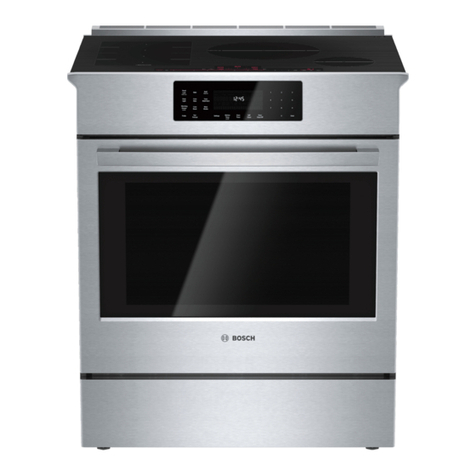
Bosch
Bosch HIIP055U/02 User manual
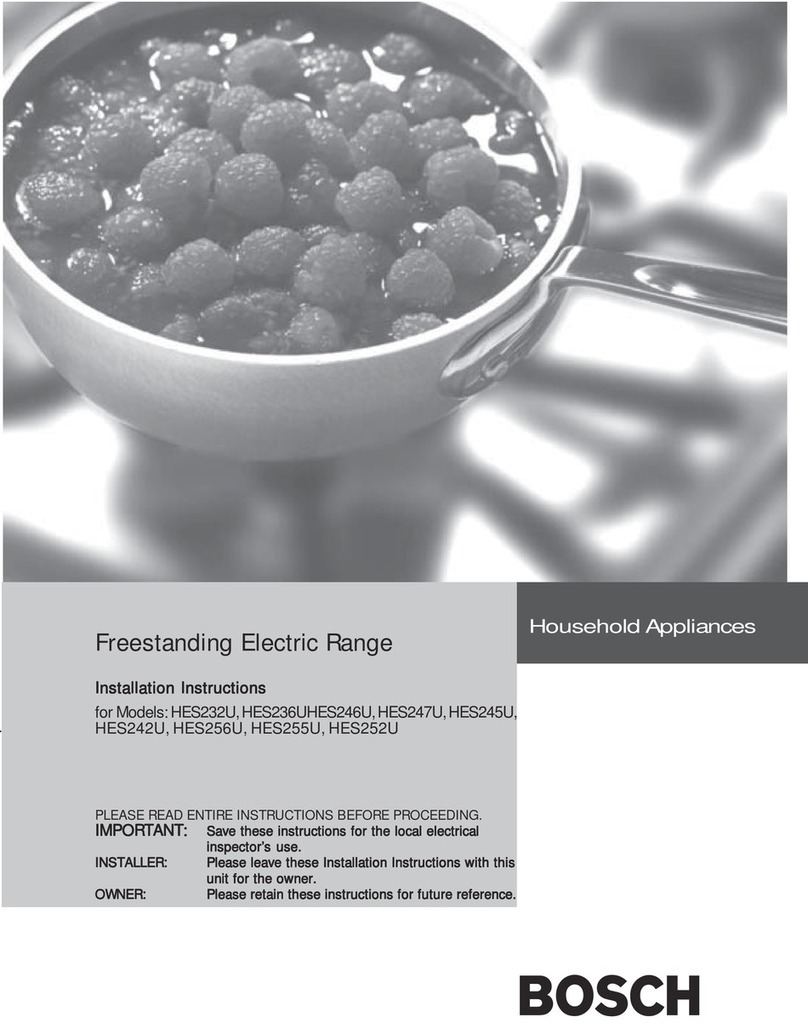
Bosch
Bosch HES232U User manual
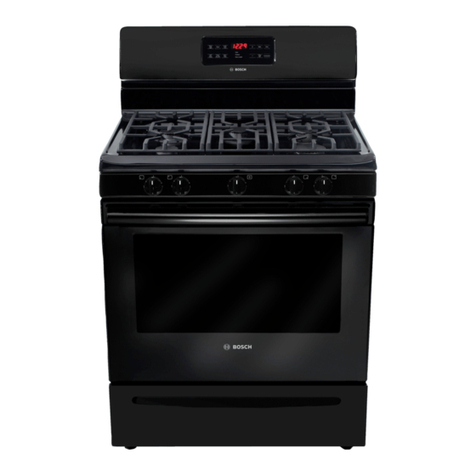
Bosch
Bosch HGS3053UC-01 User manual
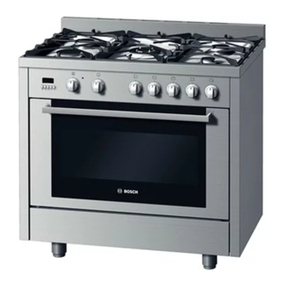
Bosch
Bosch HSB738155Z Guide

Bosch
Bosch HEI7052C User manual

Bosch
Bosch HGS8645UC User manual
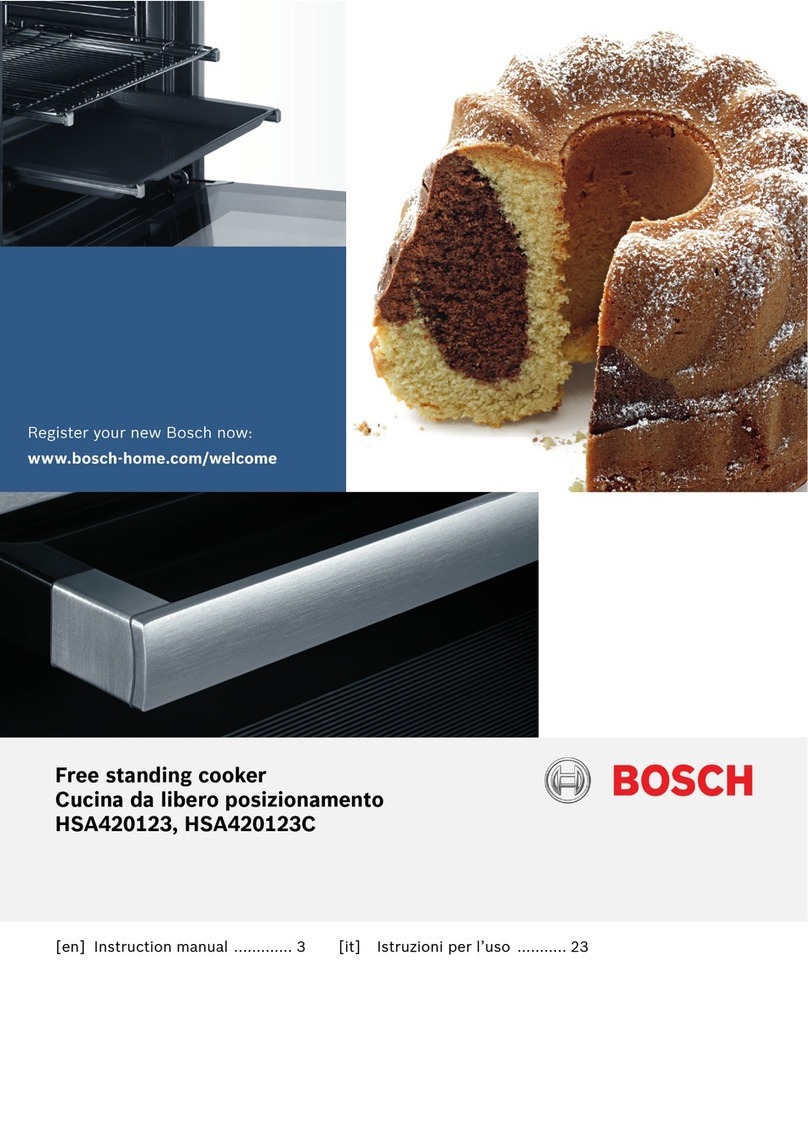
Bosch
Bosch HSA420123 User manual

Bosch
Bosch HEI80 User manual

Bosch
Bosch HDIP054U User manual

Bosch
Bosch HII8057U User manual
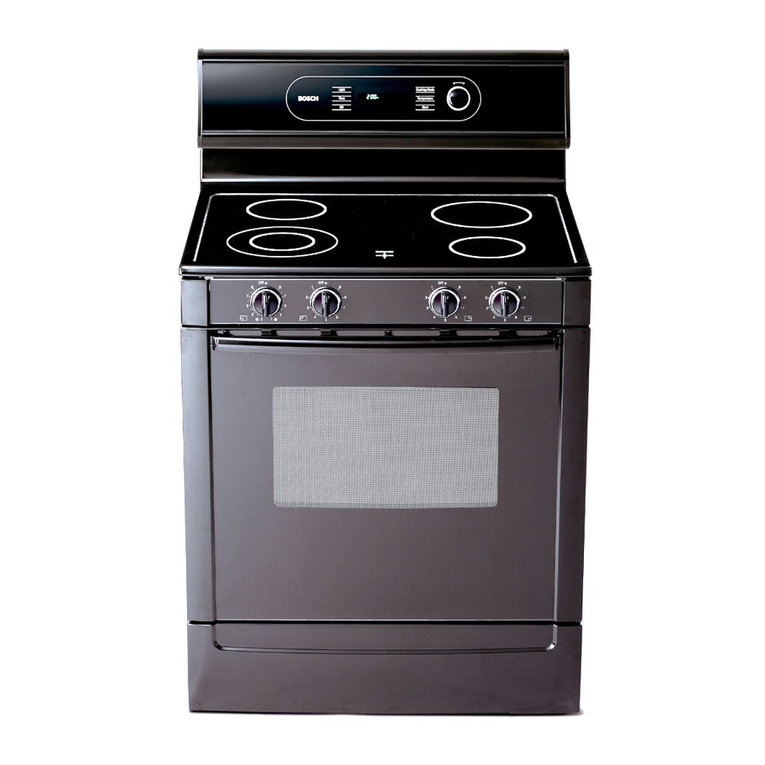
Bosch
Bosch ELECTRIC FREE-STANDING CONVECTION RANGE User manual
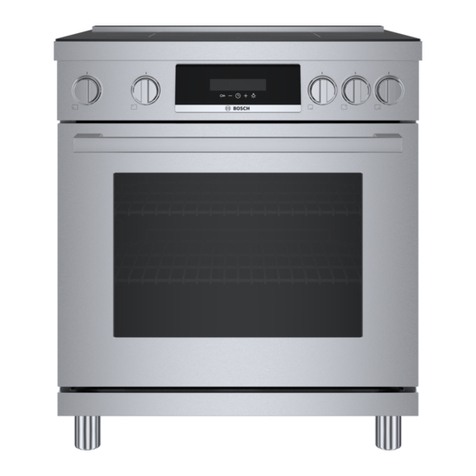
Bosch
Bosch HIS8055U User manual

Bosch
Bosch HES252U User manual
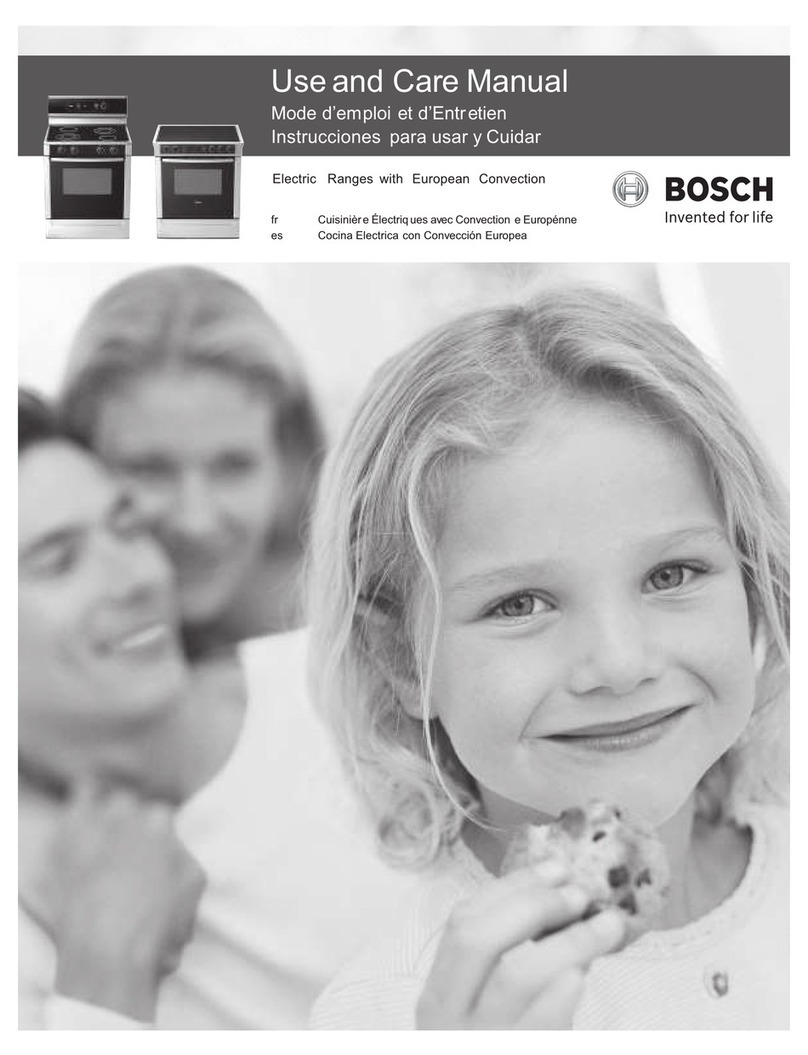
Bosch
Bosch Evolution HES7152U User manual
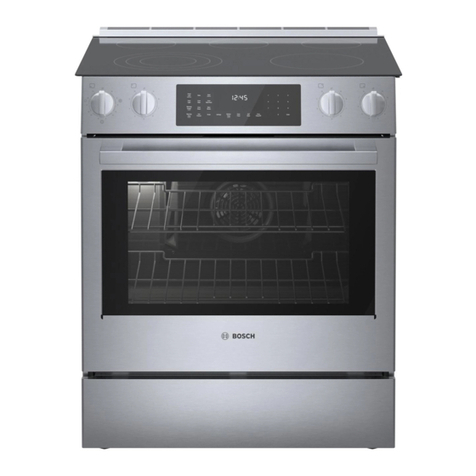
Bosch
Bosch HEIP056U User manual
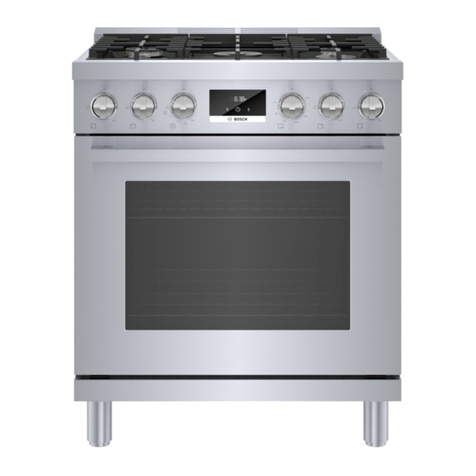
Bosch
Bosch HDS8055C User manual

Bosch
Bosch HGS256UC-01 User manual

Bosch
Bosch HDZBS301 User manual

Bosch
Bosch HEI8054U User manual
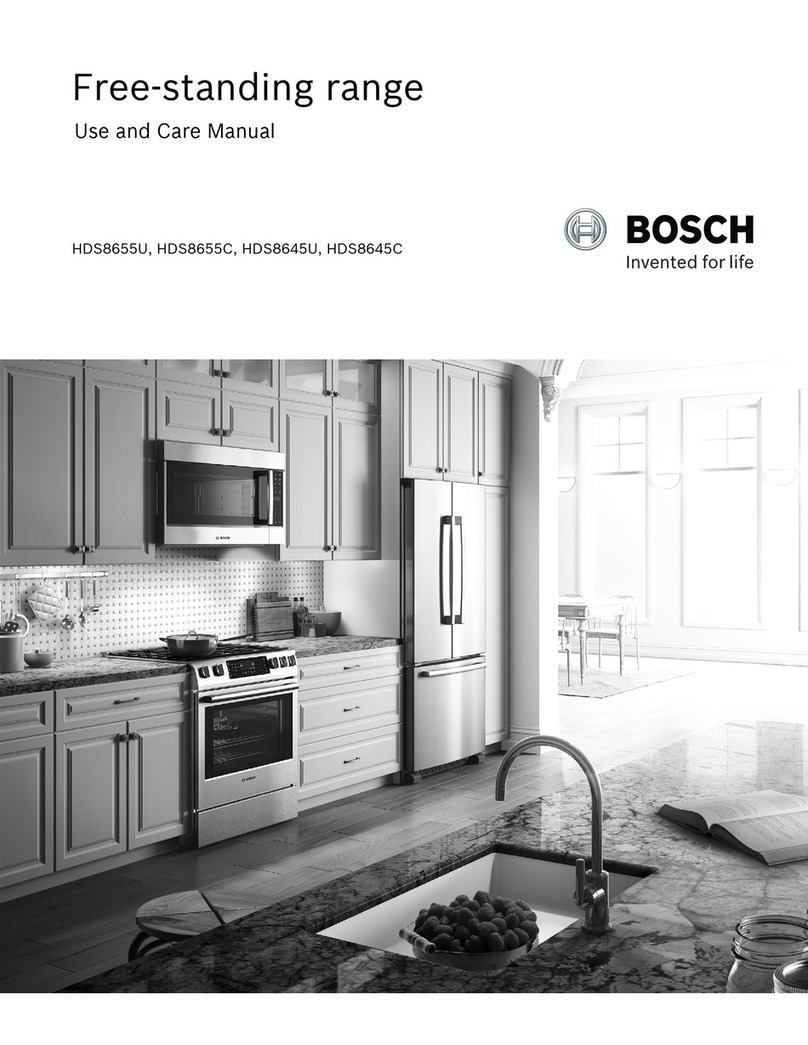
Bosch
Bosch HDS8655U User manual



